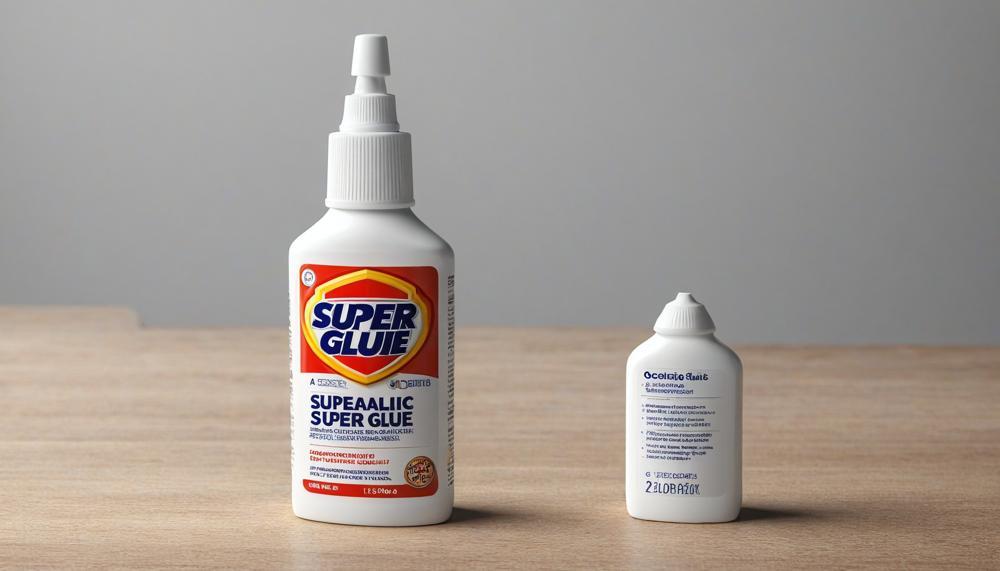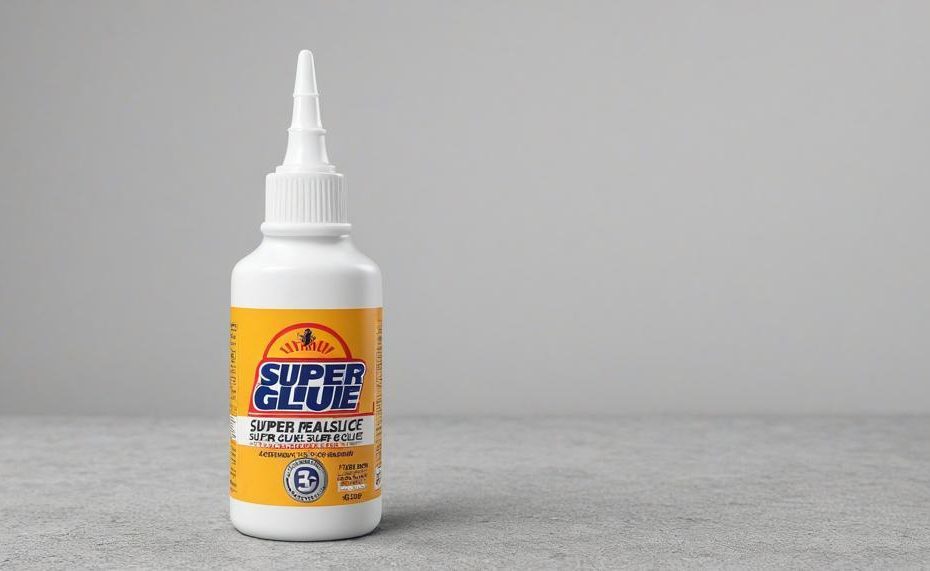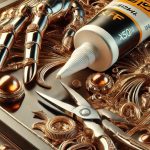Yes, you can make homemade super glue. Creating your own super glue at home is not only possible but also quite practical for various DIY projects, repairs, and crafts. Imagine the convenience of whipping up a batch of strong adhesive using common household ingredients whenever you need it.
While it might not rival the industrial strength of commercial super glues, homemade versions can still be impressively effective for many applications, bonding materials like plastic, wood, metal, and ceramics.

Table of Contents
Key Takeaways:
- Versatility: Homemade super glue works on a variety of materials, making it a handy solution for numerous fixes and projects.
- Cost-Effective: Save money by making your own adhesive rather than buying expensive store-bought options.
- Customization: Adjust the recipe to suit your specific needs, whether you need a thicker or thinner consistency.
- Storage: Leftover glue can be stored in an airtight container for future use, ensuring you always have some on hand.
- Sense of Accomplishment: There’s a unique satisfaction that comes from crafting something useful with your own hands.
Stay with us to discover how you can mix up your own batch of super glue right at home, unlocking a world of possibilities for your DIY adventures.
Tips for Using Super Glue Effectively
| Tip | Description | Details |
| Choose the Right Type | Select glue suitable for your materials. | Ensure the glue is compatible with the surfaces you are bonding, such as plastic, wood, metal, or ceramics. Read more about adhesives. |
| Prepare Your Workspace | Set up a clean and organized area. | Have all necessary materials like gloves, plastic wrap, and a bonding accelerator within reach to ensure a smooth application process. |
| Apply Sparingly | Use small amounts of glue. | Apply a tiny amount of glue to one surface and press the pieces together. Excess glue can cause weak bonds and messy results. |
| Allow Proper Drying Time | Let the glue set undisturbed. | Depending on the recipe, homemade super glue can take a few minutes to a couple of hours to dry completely. Be patient to achieve a strong bond. |
| Remove Excess Glue Safely | Use household items to clean up. | Gently scrape off excess glue with a plastic scraper or use a bit of acetone on a cotton swab for cleanup. Learn how to remove super glue. |
| Store Properly | Keep glue in optimal conditions. | Store homemade super glue in a cool, dry place with the cap tightly sealed to maintain its effectiveness. An airtight container is recommended. |
| Prioritize Safety | Use protective gear and caution. | Wear gloves to protect your skin and work in a well-ventilated area. Be cautious to avoid contact with skin and eyes. Safety tips for handling super glue. |
Speeding up the Drying Time of Super Glue
To expedite the drying time of homemade super glue, various methods have proven effective. These techniques revolve around manipulating environmental conditions and employing certain additives to enhance the curing process. Here’s a detailed breakdown:
| Method | Description | Notes |
| Hair Dryer or Table Fan | Applying gentle heat from a hair dryer or maintaining air circulation with a table fan can significantly speed up the chemical reaction that hardens the glue. Ensure the heat is not too intense to avoid improper curing. | Use on a low setting to avoid overheating. |
| Baking Soda | Sprinkling a small amount of baking soda onto the applied glue accelerates the drying process. The baking soda acts as a catalyst, causing the glue to set almost instantaneously. | Effective for small repairs and bonding. |
| Rubbing Alcohol | Adding a few drops of rubbing alcohol to the glue helps in faster evaporation and speeds up drying. It helps reduce the glue’s viscosity, allowing it to dry quicker. | Use sparingly to avoid thinning the glue too much. |
| UV Light | Exposing the glue to a UV light source can hasten the drying process. This method is akin to how nail salons use UV lights to quickly dry nail polish. | Ideal for small, clear areas where light can penetrate. |
| Pressure Application | Applying pressure with a clamp can enhance the bond and speed up the curing time. For an even faster bond, combine this with baking soda. | Useful for ensuring a tight bond between surfaces. |
| Water Addition | Adding a tiny bit of water to the glue can also speed up its drying process by helping the glue to cure faster due to the increased humidity. | Only a small amount is needed to be effective. |
Additional Tips:
- Avoid Heat Guns: Using a heat gun may cause the glue to dry too quickly, potentially resulting in a weaker bond or incomplete curing. Opt for gentler heat sources like a hair dryer.
- Proper Ventilation: Ensure adequate ventilation when speeding up the drying process to prevent fumes from building up, especially when using additives like alcohol or baking soda.
Storing Super Glue for Longevity
To ensure the longevity of homemade super glue, follow these essential storage guidelines:
| Storage Tip | Details | Notes |
| Airtight Seal | Ensure the cap is tightly closed | Prevents air and moisture exposure |
| Cool, Dry Place | Store between 5°C and 20°C | Avoid direct sunlight and humidity |
| Refrigeration | Store in a sealed plastic bag in the fridge | Allow to reach room temperature before use |
| Use a Desiccant | Add silica gel packet to storage container | Absorbs excess moisture |
| Avoid Freezing | Do not store in the freezer | Prevents chemical alteration |
| Regular Checks | Check glue condition periodically | Replace if thick, stringy, or hard |
The Science Behind Barnacle Glue
Barnacle glue’s remarkable ability to adhere underwater stems from its unique chemical composition and multi-faceted adhesion mechanisms. This glue is primarily composed of proteins that form strong, insoluble bonds in aquatic environments. These proteins are rich in amino acids like DOPA (dihydroxyphenylalanine), which play a crucial role in adhesion.
Chemical Composition and Adhesion Mechanisms
| Component | Role | Function |
| Proteins (e.g., DOPA-rich proteins) | Primary adhesive elements | Form covalent and hydrogen bonds, providing strong attachment |
| Hydrophobic molecules | Water resistance | Repel water to ensure adhesive interface remains dry |
| Minerals (e.g., calcium) | Structural support | Enhance glue’s mechanical strength |
Key Mechanisms Explained:
- Hydrogen Bonding: Barnacle glue forms extensive hydrogen bonds with substrates, contributing significantly to its adhesive strength. These bonds, although individually weak, collectively provide substantial adhesion.
- Electrostatic Forces: The glue’s proteins contain charged groups that create electrostatic attractions with surfaces, further enhancing adhesion.
- Hydrophobic Interactions: Certain components of barnacle glue are hydrophobic, meaning they repel water. This characteristic helps create a water-resistant bond, crucial for underwater adhesion.
- Covalent Bonds: The presence of DOPA enables the formation of strong covalent bonds, which are less affected by water, ensuring durability and resilience of the adhesive bond.
Unlocking the Potential of Homemade Super Glue
The short answer to making homemade super glue is that you need baking soda and water. Here’s a step-by-step guide and a comparison of its effectiveness against store-bought super glue.
Ingredients and Steps to Make Homemade Super Glue
Ingredients:
- Baking soda
- Water
Steps:
Preparation:
Mixing:
Application:
Storage:
Effectiveness Compared to Store-Bought Super Glue
While homemade super glue is a cost-effective and fun alternative, it has some limitations compared to commercial super glue. Here’s a detailed comparison:
| Feature | Homemade Super Glue | Store-Bought Super Glue |
| Ingredients | Baking Soda and Water | Cyanoacrylate |
| Bonding Time | Seconds | Instant |
| Materials Bonded | Plastics, Ceramics, Wood, Metal | Plastics, Ceramics, Wood, Metal, More |
| Strength | Moderate | High |
| Cost | Low | Moderate |
| Durability | Lower for demanding tasks | High for all tasks |
Effectiveness:
Homemade super glue bonds various materials effectively but lacks the strength and durability of commercial super glue, particularly for demanding tasks. The store-bought variety contains cyanoacrylate, which creates a more robust and reliable bond.
Safety and Storage:
Exercise caution when using homemade super glue. Always store it in an airtight container to maintain its usability.
For more information on adhesives and their properties, you can refer to trusted sources like the Wikipedia article on Adhesives.
In essence, while homemade super glue offers a budget-friendly and accessible option, it is best suited for light-duty projects and quick fixes.
Conclusion
Creating your own super glue at home is a practical and cost-effective solution for many DIY enthusiasts. Not only does it save money, but it also provides the flexibility to customize the adhesive’s consistency to suit specific needs. While homemade super glue might not match the industrial strength of commercial products, it offers impressive versatility, working well on materials such as plastic, wood, metal, and ceramics.
One of the main benefits of making homemade super glue is its adaptability. Whether you need a thicker or thinner adhesive, you can adjust the recipe accordingly. This customization ensures that you have the perfect consistency for your project. Additionally, leftover glue can be stored in an airtight container for future use, making it a convenient option for ongoing repairs and crafts.
Another advantage is the sense of accomplishment that comes from creating a functional product with your own hands. The process is straightforward and uses common household ingredients, making it accessible to most people. Plus, knowing that you can whip up a batch of strong adhesive whenever needed can be incredibly satisfying.
In summary, making homemade super glue is a versatile, cost-effective, and customizable alternative to store-bought options.






